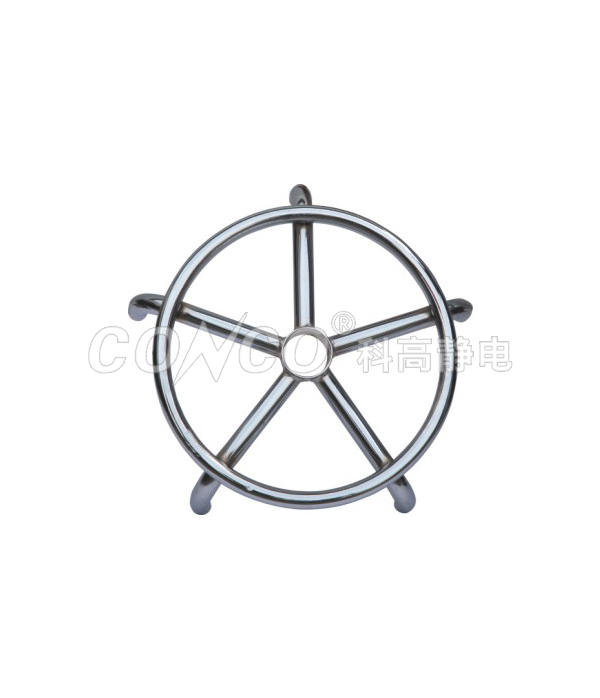Ground
Grounding is very important to reduce the static charge generated on the conductor. The human body is a conductor and is the main source of static electricity. Therefore, we must reduce the static charge generated on people who touch sensitive antistatic components or components. It is best to prevent the generation of static electricity on the human body through the human body grounding.
Several personal grounding devices:
In industry, the wrist strap is the most commonly used grounding device. The wrist strap will safely and effectively discharge the static charge on your body, and to play the role of a wrist strap reasonably requires reasonable contact with the skin. A dirty or loose wrist strap may retain the leakage of static charge, invalidating the anti-static control. Conductive footwear or foot grounding can be used or supplement the wrist strap.
Workstation grounding device
Conductive or static dissipative work surfaces are an indispensable part of an electrostatic safety workstation, especially where hand assembly takes place. When using wrist straps, for clean work surfaces and properly connected to a common point grounded Necessary, conductive or static dissipative materials can generate static charge, but when they are properly grounded, they can effectively leak the static charge.
shield
The next concept is to isolate vital parts and components during storage or transportation. Isolate from charged objects or charged electrostatic fields. During storage or transportation, insulators are the best way to prevent electrostatic discharge damage. Since grounding cannot drain away static charges or insulators, it is necessary to isolate sensitive components and components from them. Reducing conventional plastics and other types of insulators in stationary work, shipping, and handling areas is the best way to isolate products from insulators. Isolation can also be accomplished by restricting access to the entire work area or workstation. Finally, we take advantage of the fact that static charges cannot enter containers made of conductive materials or layers. This effect is called the Faraday Cup effect. When storing and transporting electronic components or loading circuit boards, ensure that containers with similar Faraday cup characteristics are used. These containers will be isolated from electrostatic discharge injuries. Faraday cups are usually used to control electrostatic discharge. They are metal bags, conductive bags, and totes with lids. These Faraday cups can carry these static charges on the surface and remove it before opening.
neutralize
Using static elimination equipment, the main component is an ion generator. Neutralization is important because grounding and isolation will not release electrical charge from insulators such as synthetic cloth or conventional plastic. Neutralizing or removing the charge naturally generated in the process from the insulator is called ionization. Ions are simple charged substances that exist in the air. Ions are produced by natural energy substances, which include sunlight, lighting, open flames and radiation.
We can generate trillions of ions through the ion generator. The ion generator uses a high voltage to generate a balanced mixed charged ion, and uses a fan to help the ion drift to an object or area and neutralize it. Ionization can neutralize the static charge on the insulator within eight seconds, so it can reduce their potential damage. Ionization is not a substitute for grounding or isolation. Ionization only reduces the possibility or risk of electrostatic discharge accidents.


